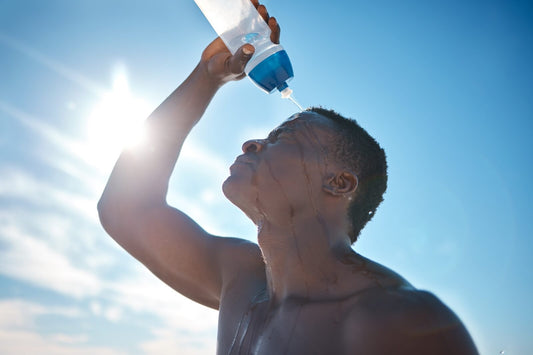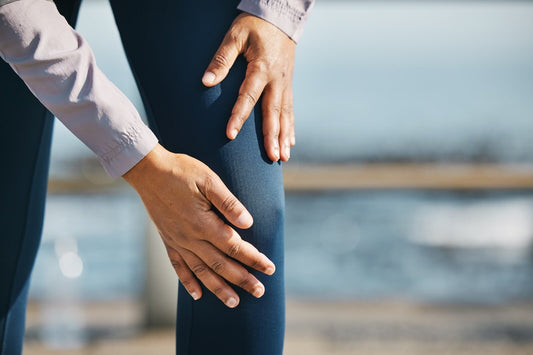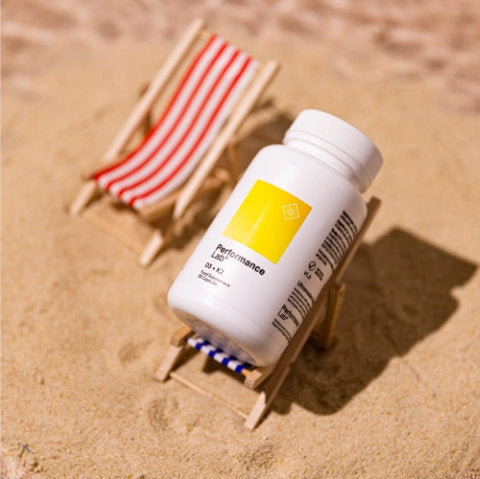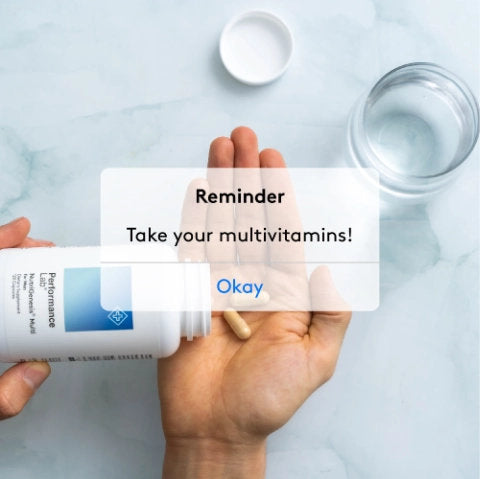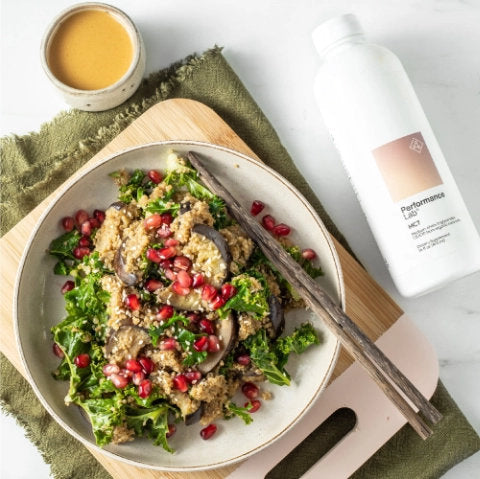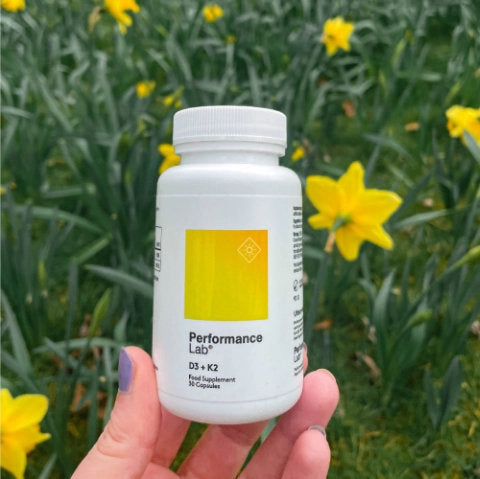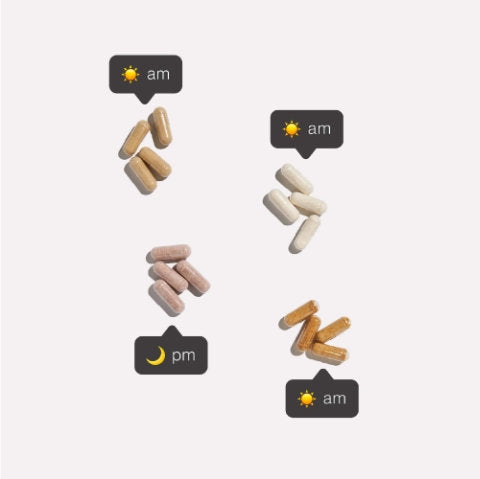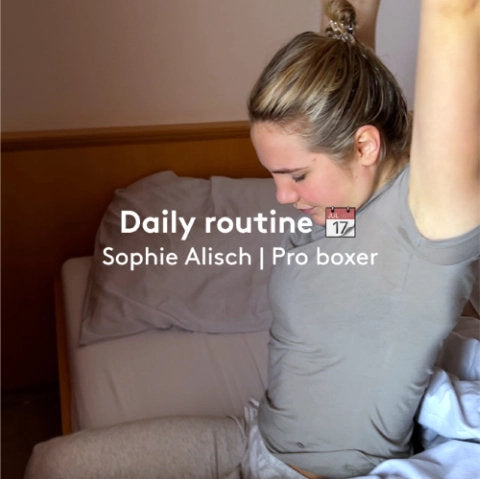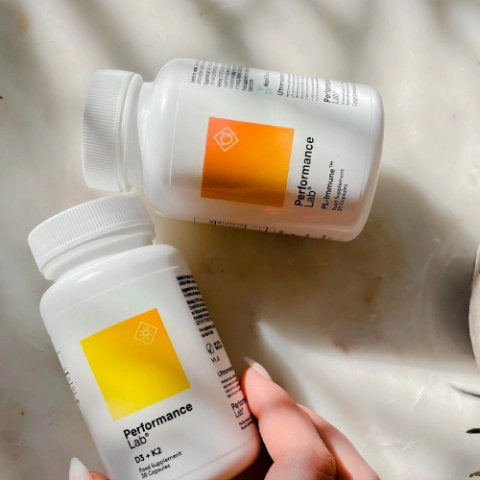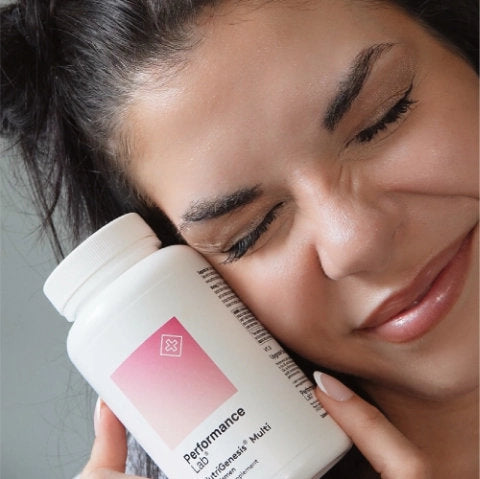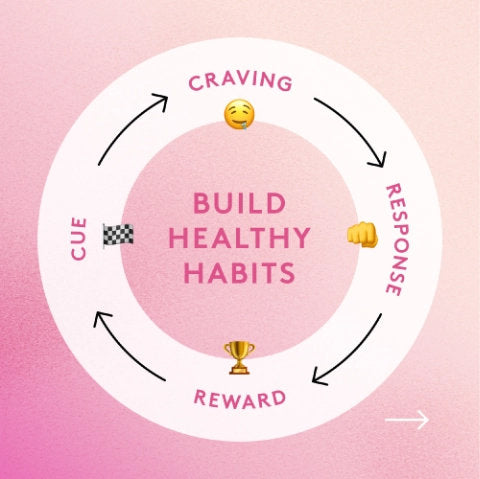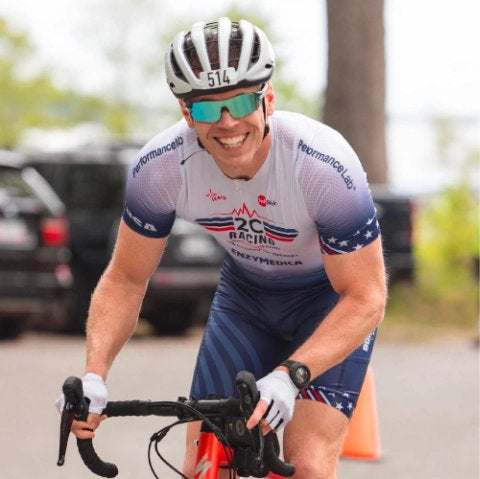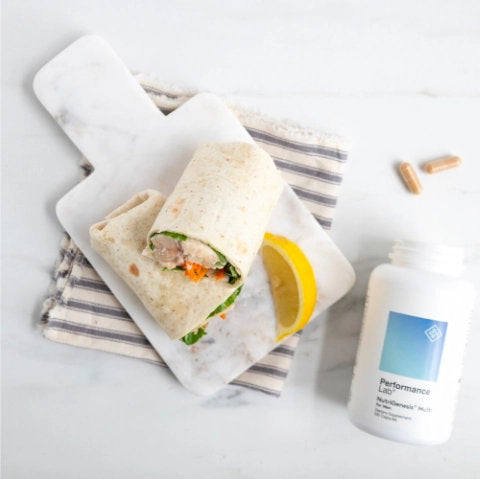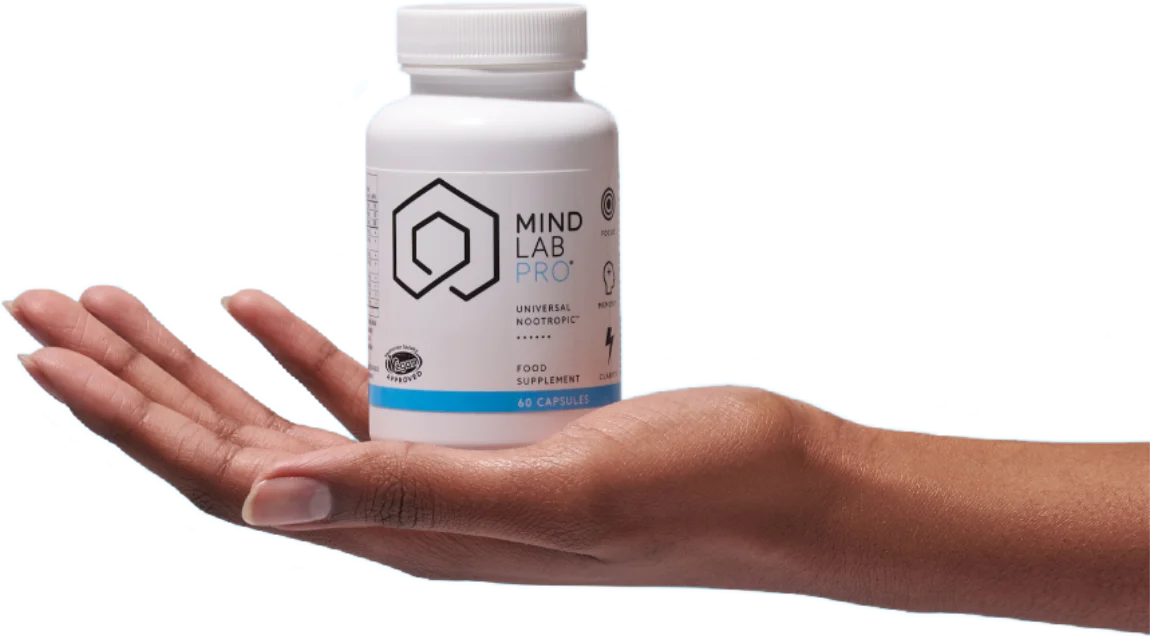Just finished a heavy leg day or a long run and your knees, hips, or ankles are reminding you?
While muscle soreness is common (and even expected), joint pain can mean a deeper stress or improper recovery.
Many fitness enthusiasts only focus on the muscle recovery process - consuming protein, stretching, sleep. But they forget about the joint side of recovery. Over time, this neglect can impact your flexibility and range of motion, exercise performance, and comfort.
Your joints endure repetitive loading and micro-stress in every workout. If you don't take proper care, it can eventually lead to inflammation, stiffness, or even chronic pain. (1, 2)
On the other hand, proper recovery helps protect your cartilage, support mobility, and sustain peak sports performance.
Understanding the essentials of proper joint recovery after workouts will help you avoid plateaus and setbacks.
In this guide, we'll cover practical, study-backed recovery protocols.
From nutrition to movement and lifestyle tips, we'll answer key questions such as what helps, how long recovery takes, supplements for joints, over-training, and more - so you can train smarter and progress faster.
Key Takeaways
- Your muscles aren't the only ones that face mechanical stress and inflammation after every workout; your joints do too.
- Post-workout soreness in joints typically fades after 2–5 days. Any longer than that, and you should seek professional attention.
- Hydration with electrolytes is not to be overlooked. Staying hydrated promotes joint lubrication. (3, 4)
- Anti-inflammatory nutrition priorities: focus on omega-3s, vitamin D, collagen, tart cherries, and magnesium to support recovery. (5)
- The 3-3-3 rule (3 workouts, 3 exercises, 3 sets per week) gives your joints adequate rest in between sessions.
- Running stresses knees and ankles due to repetitive impact (6). Lifting weights, especially with improper form, stresses shoulders and elbows through heavy loads.
- Cross-training, controlled movements, and mixing up exercises in your fitness routine prevents repeating stress on the same joints.
- Don't confuse muscle soreness for joint pain — the latter is deeper, lasts longer, and aggravates with movement.
- Smart recovery combines 7–9 hours of deep rest, targeted nutrition, mobility work, and science-backed joint support supplements.
Why Your Joints Hurt After a Tough Workout

There are two main drivers of post-workout joint soreness.
One is mechanical load, which includes repetitive stress from doing exercises. This stress affects your cartilage, a spongy tissue on the ends of your joints that ensures smooth movement and absorbs impacts.
Hard training also affects synovial fluid, which lubricates cartilage to reduce friction when moving. Too much intense exercise can temporarily increase synovial fluid's thickness, reducing the sliding ability of your joint surfaces. (8) While some exercise is beneficial for joints, too much or improper training can cause wear over time.
The second possible reason for post-workout joint soreness is a metabolic or inflammatory response. This is a response to the mechanical load, leading to micro-tears and short-term inflammation in muscles and joints that trigger repair signals and healing. This process is normal and in fact essential for recovery, as long as inflammation is gone after a few days.
If the pain stays for longer, or worsens, schedule an appointment with your doctor, as it could suggest a deeper issue like arthritis.
What Helps Joint Pain After Exercise?

A number of science-backed strategies can alleviate the pain and help provide long-range joint care.
- Proper nutrition: protein doesn't just aid muscle fiber recovery but also builds your connective tissues. Focus on foods rich in type-II collagen, which include bone broth, chicken skin, fish skin, as well as foods rich in vitamin C that help boost collagen production and lower inflammation, such as citrus fruits and tart cherries. (9, 10) At the same time, ensure intake of anti-inflammatory fats like omega-3s and olive oil.
- Hydration & joint fluid: Ensuring optimal water intake before, during, and after your workouts is important for lubrication and joint health. (3, 4)
- Targeted joint nutrients: a number of plant-based nutrients have been shown to support joint health and comfort, including Boswellia Serrata, curcumin, glucosamine+chondroitin, and MSM. (11, 12, 13)
- Heat and cold therapies, foam-rolling, mobility work. Ice packs applied to sore areas can ease swelling and stiffness, whereas heat stimulates blood flow. A foam roller is helpful for deep tissue massage, which relieves muscle tension and inflammation (these can contribute to joint stress). ( 14, 15, 16) Try some light stretches, joint circles, hip openers, or easy resistance band work.
How Long Does Post-Workout Inflammation Last?

Post-exercise inflammation follows a familiar pattern. It usually lasts between 24-72 hours. (17)
Looking at it in a simplified way, inflammation and discomfort can come in three stages, depending on exercise intensity.
- Acute pain: this pain only affects the muscles, and it happens during the workout itself, due to the buildup of hydrogen ions, which cause that infamous burning sensation. If you have joint pain at this stage, it could mean an injury.
- Delayed onset muscle soreness (DOMS): 24-72 hours after the workout, it's normal to have sore muscles, due to inflammation and the muscle repair process. Any joint discomfort at this stage is not common.
- Joint soreness and recovery: exercise stress on your cartilage, tendons, and joint capsule can lead to pain that feels deeper than muscles. Joints take longer to recover, in part, due to reduced blood flow. It might last 2-5 days after a workout. Any longer than that, and you may need extra care through electrolyte hydration, mobility drills, anti-inflammatory nutrition, and help from a physical therapist.
The 3-3-3 Rule for Workout Recovery

One simple way to ensure effective workouts while still giving your joints time to heal is by following the 3-3-3 rule for working out. This approach works well for the average person looking to balance progress with recovery.
It involves training 3 times per week, 3 exercises or circuits per workout, and three sets per exercise. This way of training focuses on compound movements, short but effective training sessions, and gradual improvement through progressive overload.
This allows your body to adapt and progress, while leaving you with 4 days of the week without intense workouts. Plenty of time to replenish energy stores and let your joints recover from repetitive stress.
You can still train the remaining 4 days in the week, but at a much lighter pace, putting more focus on active recovery.
Specifics for Running vs Gym Workouts

Depending on your workout type, different joints will carry different loads. Joint recovery from running asks different questions than joint recovery after a gym.
Running involves repetitive impact on your knees, ankles, spine, and hips, while gym means heavy load on your knees, shoulders, spine, and elbows.
Gym Recovery Tips
When it comes to gym training, one way you can ease joint stress without compromising gains is by doing slow, controlled reps, without sharp jerks or twitches.
Avoid sudden increases in weight - focus on gradual progress because your joints are slower to adapt than muscles. (18)
Running Recovery Tips
Running places stress equal to 2-3 times your body weight on each stride. (19)
To lighten the load, consider running on woodland paths, grass, or dirt. These surfaces are much easier on your knees than asphalt or concrete.
Mixing up your workouts (also called cross-training) by doing different exercises throughout the week safeguards you from repetitive stress on specific joints, promotes balanced development across different muscle groups (which in turn supports joint alignment and stability), and gives your body time to recover through variation.
An example can be light cycling or swimming on your off-days. This allows you to stay active while giving your knees a break from heavy activity.
Nutrition & Supplementation: What Vitamin or Lack Might Affect Joint Pain?

Nutrition is the silent hero of joint health. You can do all the right things in terms of training techniques and rest, but if you don't feed your body what it needs, every other effort falls short.
A varied, balanced diet is the foundation. Build on it with an emphasis on the following key nutrients:
- Vitamin D - keeps your bones and joints strong while reducing inflammation. (20, 21) Get it through direct natural sunlight, fatty fish, or a high-quality supplement like Performance Lab D3+K2.
- Omega-3s - supports relief from joint pain and stiffness, and aids recovery (22, 23, 24). It has anti-inflammatory properties as well. Make sure to get enough from salmon, sardines, or plant-based sources, and fill in any gaps with a clean, plant-powered omega-3 supplement, like our Performance Lab Omega-3.
- Magnesium - essential for energy, inflammation regulation, deep sleep and recovery, and more. (25) Focus on magnesium-rich foods like dark leafy greens, nuts, and whole grains, or take a bioavailable magnesium supplement.
- Collagen - a protein that holds your joints together and supports their function. (12) Supplementation with 10 g of hydrolyzed type-II collagen (collagen peptides) can be helpful for some athletes. (26)
Some people wonder, "what vitamin am I lacking if my joints hurt?" While it doesn't necessarily mean you lack a nutrient, it's possible for nutrient deficiencies to contribute to joint discomfort. The main ones to watch out for are vitamin D, omega-3s, and magnesium.
Another common question is "can too much protein cause joint pain?" To clarify, excessive protein isn't shown to directly cause joint pain, but an imbalanced diet coupled with inflammation may.
When to Seek Help & Avoiding Mistakes
As we've touched upon in the beginning, some joint discomfort is common, but persistent pain isn't.
If the discomfort is accompanied by swelling or sharp pain, see a professional as soon as possible - to address any potential injury and avoid things getting worse.
Also, there is a common mistake of confusing muscle pain for joint pain. It's entirely possible for muscle pain to be mistaken for joint pain.
The difference is that muscle pain often presents as soreness, with slight burning sensation that eases with rest or stretching.
Joint pain is more specific to parts of the body where joints are, with dull aches that can turn into sharp pain with movement. Joint pain is often felt deeper beneath the muscle, and lasts longer than muscle soreness.
Final Thoughts
Smart joint recovery is all about rest + nutrition + movement + targeted support.
You don't have to live hobbling after workouts; in fact, you shouldn't.
Developing a consistent routine that includes the following can be a game-changer:
- Sleeping 7-9 hours per night
- Consuming anti-inflammatory foods like tart cherries
- Giving your body rest days from repetitive movements
- Switching up workouts with joint-friendly exercises (light cycling, swimming, stretching, cardio) that boost blood flow and support recovery
All of this should help enhance your joint recovery and reduce muscle soreness.
For added support, consider Performance Lab® Flex.

A clean, science-driven formula featuring CurcuWIN® turmeric, AprèsFlex® Boswellia serrata, glucosamine sulfate 2KCL, Phytodroitin™ chondroitin, and OptiMSM® - five studied ingredients that may support flexibility, nourish cartilage, and promote comfortable movement as part of your recovery routine.
References
- Kreher, J. B., & Schwartz, J. B. (2012). Overtraining syndrome: a practical guide. Sports Health, 4(2), 128–138.
- Cheng, A. J., Jude, B., & Lanner, J. T. (2020). Intramuscular mechanisms of overtraining. Redox Biology, 35, 101480.
- Hosseini, S. M., Vyas, N., Hoemann, C. D., & Dufresne, M. (2013). Altered hydration behaviour of proteoglycan-degraded articular cartilage. BMC Musculoskeletal Disorders, 14, 289.
- Kloss, K. (2021). Dehydration and arthritis: How not drinking water affects your joints. CreakyJoints.
- Heaton, L. E., et al. (2017). In-season nutritional strategies to enhance recovery for team sport athletes. Sports Medicine, 47(11), 2201–2218.
- Kakouris, N., Yener, N., & Fong, D. T. P. (2021). Running-related musculoskeletal injuries in runners: Systematic review. Journal of Sport and Health Science, 10(5), 513–522.
- Bukhary, H. A., et al. (2023). Prevalence and pattern of injuries across weight-training sports. Cureus, 15(11), e49759.
- Tenberg, S., et al. (2021). Warm-up and fatiguing exercise effects on knee joint sounds (vibroarthrography). PLoS ONE, 16(9), e0257652.
- DePhillipo, N. N., et al. (2018). Vitamin C supplementation after musculoskeletal injuries: Systematic review. Orthopaedic Journal of Sports Medicine, 6(10), 2325967118804544.
- McHugh, M. P. (2022). “Precovery” vs recovery: Cherry juice in exercise recovery. Scand J Med Sci Sports, 32(6), 940–950.
- Yu, G., et al. (2020). Effectiveness of Boswellia for osteoarthritis: Systematic review & meta-analysis. BMC Complement Med Ther, 20(1), 225.
- Martínez-Puig, D., et al. (2023). Collagen supplementation for joint health. Nutrients, 15(6), 1332.
- Liu, X., et al. (2018). Dietary supplements for treating osteoarthritis: Systematic review & meta-analysis. Br J Sports Med, 52(3), 167–175.
- Szajkowski, S., Pasek, J., & Cieślar, G. (2025). Foam rolling or percussive massage for DOMS. J Funct Morphol Kinesiol, 10(3), 249.
- Wiewelhove, T., et al. (2019). Meta-analysis of foam rolling on performance and recovery. Front Physiol, 10, 376.
- Pablos, A., et al. (2020). Protective effects of foam rolling in rats. Int J Med Sci, 17(1), 71–81.
- Stožer, A., Vodopivc, P., & Križančić Bombek, L. (2020). Pathophysiology of exercise-induced muscle damage. Physiol Res, 69(4), 565–598.
- Solanki, K., et al. (2021). Articular cartilage repair & joint preservation: Biological approaches. J Clin Orthop Trauma, 22, 101602.
- Hazzaa, W. A., et al. (2023). Muscle fatigue influence on running kinematics & plantar pressure: Systematic review. Sports, 11(12), 241.
- Park, C. Y. (2019). Vitamin D in prevention and treatment of osteoarthritis. Nutrients, 11(2), 243.
- Zhang, D., et al. (2025). Vitamin D supplementation studies in knee osteoarthritis. Front Med, 11, 1423360.
- Zivkovic, A. M., et al. (2011). Dietary omega-3s and inflammation/metabolic health. California Agriculture, 65(3), 106–111.
- Fernández-Lázaro, D., et al. (2024). Omega-3s on post-exercise inflammation and performance: Systematic review. Nutrients, 16(13), 2044.
- Deng, W., et al. (2023). Omega-3 PUFA supplementation in osteoarthritis: Meta-analysis. J Orthop Surg Res, 18(1), 381.
- Fatima, G., et al. (2024). Magnesium: Comprehensive review of its role in health and disease. Cureus, 16(10), e71392.
- Nulty, C. D., et al. (2024). Hydrolyzed collagen pre-resistance exercise augments collagen synthesis. Am J Physiol Endocrinol Metab, 327(5), E668–E677.



